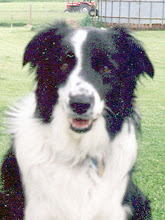Counting chickens is easy these days.
We're down to five: three Buff Orpingtons, one Cuckoo Maran and one Buckeye. (Yes, I'm eyeing the chick calendar for more in the spring, but that's a story for another day).
A month ago I took down the poultry netting around the chicken yard because the area had become a muddy mess and poultry netting sags under the weight of snow. I hoped that whatever was munching on my chickens had been discouraged by the electrified netting and changed her hunting patterns.
"Go free," I told the hens as I opened the gate to the chicken yard and allowed them access to the sheep pasture. If I lost another hen, I'd close them back up in the chicken yard.
The hens went about their merry way, pecking and scratching. In the afternoon, they hung out in the barn and clucked at me for scratch grain.
When I went in the barn yesterday, only four clucked at me.
A Buff Orpington was missing.
So, I did my walkabout, looking for feathers and wondering what got her.
I found no feathers and found no hen.
Could she possibly be laying an egg?
At this time of year, with short days, the hens don't lay eggs often. I was averaging an egg a day earlier this month, but hadn't found any eggs for over a week. I lifted the lid to the nesting box, and found no hen nor no egg.
So, I went about my chores, bummed that I'd lost another hen and that I'd have to confine them to their chicken yard. While walking the dogs in the fading afternoon light, I looked toward the chicken house and saw three Buff Orpingtons. Where had she been hiding out?
After feeding the dogs, I went back to the chicken house where the hens were roosting for the night, and counted five chickens.
Then, I walked to the side of the chicken house that houses nesting boxes that the hens haven't used for over a year--and that I haven't checked for weeks. There I found 10 eggs, including one that was clean and still warm. Apparently the hens (wanting a change of scenery?) had walked across the chicken house and chosen a new nesting box, and for the past few weeks had been laying eggs there.
And, so I was reminded on this late December day, when the sun rarely shines bright and always sets too soon, and when a pandemic dampens the holidays, that there are glimmers of hope and joy--even if it comes as finding the "missing" golden hen and eggs.
Merry Christmas all!































































